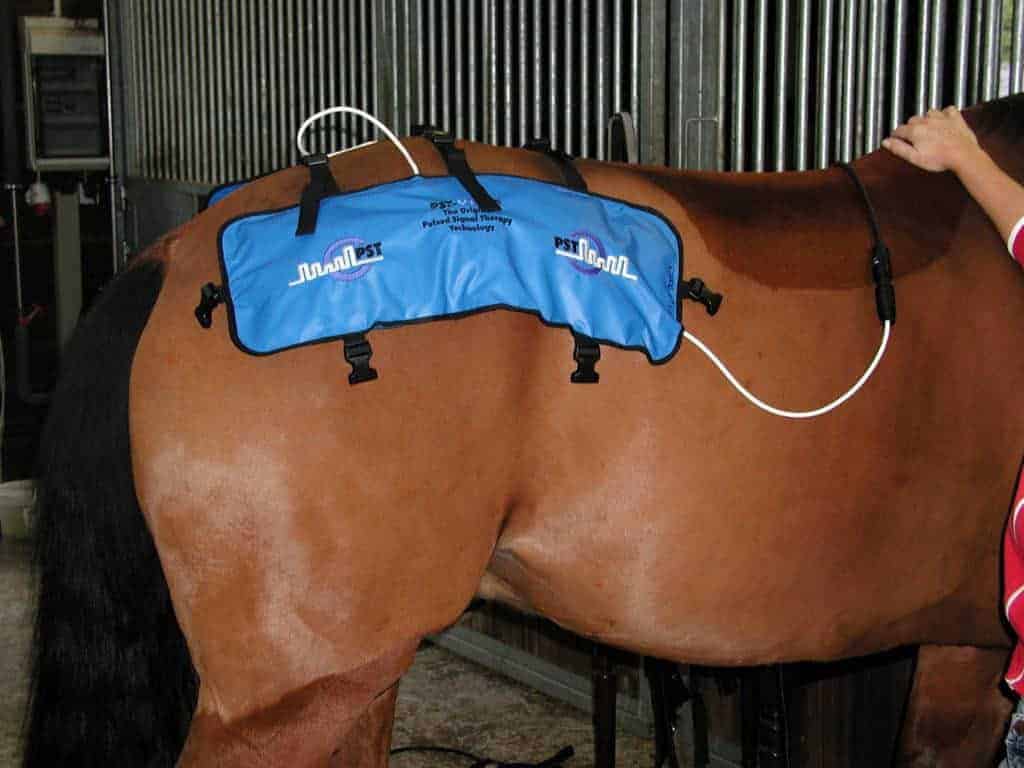
Researchers Use Models to Learn Why Equine Bodies Break
Using computational modeling, researchers can examine “what if” scenarios related to equine injuries.

Using computational modeling, researchers can examine “what if” scenarios related to equine injuries.

Sheila Schils, PhD, discusses electrotherapy’s place in physical therapy and the different devices available.

Researchers discuss the first case in which surgery to permanently prevent a renosplenic entrapment failed.
Awesome Again is recuperating from colic surgery performed Sept. 13 at Rood & Riddle Equine Hospital.

The Derby winner was cleared for exercise after undergoing surgery for a hairline fracture in his left hock.
When a horse needs surgery, what’s his prognosis for a full recovery? What problems can occur during recovery?

What factors do veterinarians look for when deciding whether to refer a horse to a hospital for colic surgery?
Kentucky Derby Presented by Yum! Brands winner Animal Kingdom had successful surgery to repair a hairline slab

The latest therapies for injured tendons and ligaments focus on rebuilding tissue to its original strength.
Archarcharch and Battle of Hastings, two of the horses injured during the Kentucky Derby day races at Churchill Downs, are both doing well after surgery at Rood & Riddle Equine Hospital in Lexington, Ky. Both surgeries took place May 8.
Horses with diaphragmatic tears (also called rents) are given a relatively poor prognosis to make a full recovery, but the condition is not a death sentence, according to the results of a recent retrospective study. Alfredo E. Romero, DVM, of
Extracorporeal shock wave therapy is an increasingly popular treatment method for equine injuries. During a presentation at the 2011 Western Veterinary Conference, held Feb. 20-24 in Las Vegas, Nev., Scott McClure, DVM, PhD, Dipl. ACVS, of Iowa

Regenerative medicine describes a group of techniques that uses the body’s natural ability to heal. Platelet-rich plasma is a regenerative therapy that can be used to treat horses with tendon and ligament injuries, arthritis, and certain wounds.
Veterinary students are often taught that dogs are three-legged animals with a spare. It might be surprising to some that the same adage is a suitable description for horses, too. “In horses where conditions exist that prevent the use of traditional
The idea of being able to “unsedate” or “reverse” a sedated horse after minor procedures is a great one, but veterinarians must select their cases carefully and be vigilant about using these drugs properly.
Colicky horses that undergo exploratory surgery and are ultimately diagnosed with an ileal impaction appear to benefit from a single injection of carboxymethylcellulose (CMC) into the ileum to resolve the problem, according to veterinarians from
Stay on top of the most recent Horse Health news with
"*" indicates required fields